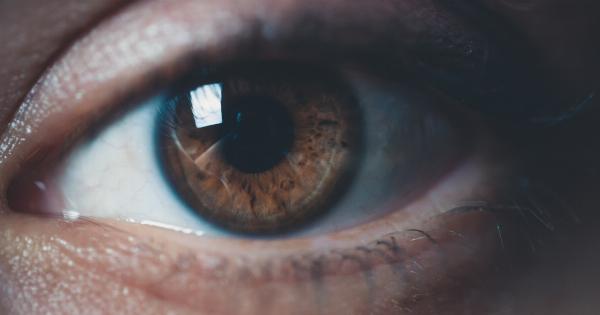Teenagers and students often lead busy lives filled with academic commitments, extracurricular activities, and hours spent in front of screens.
With the increasing prevalence of digital devices and the growing reliance on technology, it comes as no surprise that eye problems among teenagers and students are becoming increasingly common. This article aims to explore some of the most common eye problems faced by this demographic and provide insights into their causes, symptoms, and potential solutions.
1. Myopia (Nearsightedness)
Myopia, also known as nearsightedness, is one of the most prevalent eye problems among teenagers and students. It is characterized by difficulty in seeing distant objects clearly while maintaining clear vision of nearby objects.
Myopia can significantly impact academic performance and overall quality of life if left uncorrected. The increasing reliance on screens and excessive near work without adequate breaks has been linked to the progression of myopia in this age group.
2. Computer Vision Syndrome (Digital Eye Strain)
With the advent of technology, students and teenagers are spending prolonged periods in front of screens, which can lead to computer vision syndrome.
This condition encompasses various eye and vision problems caused by extended computer, tablet, and smartphone use. Symptoms may include eyestrain, dry eyes, blurred vision, headaches, and neck or shoulder pain. Poor ergonomics, improper lighting, and lack of regular breaks can exacerbate these symptoms.
3. Astigmatism
Astigmatism is a refractive error that results in distorted or blurred vision at all distances due to an irregularly shaped cornea or lens.
Teenagers and students with astigmatism may experience difficulties in reading, especially when it comes to small print or low-light conditions. The exact cause of astigmatism is not fully understood, but it is believed to be primarily a genetic condition.
4. Dry Eyes
Dry eyes occur when the eyes do not produce enough tears or when the tears evaporate too quickly.
Factors such as prolonged screen time, reduced blink rate while focusing on digital devices, and indoor environments with low humidity contribute to dry eyes. Students and teenagers with dry eyes may experience symptoms such as itchiness, redness, stinging, a gritty sensation, or excessive tearing in response to dryness.
5. Eye Allergies
Allergic reactions affecting the eyes, commonly referred to as eye allergies or allergic conjunctivitis, can cause significant discomfort for teenagers and students. Symptoms may include redness, itching, watering, swelling, and sensitivity to light.
Eye allergies can be triggered by various allergens, such as pollen, dust mites, pet dander, or certain medications. Managing allergies and avoiding triggers are crucial for alleviating symptoms.
6. Conjunctivitis (Pink Eye)
Conjunctivitis, commonly known as pink eye, is an inflammation of the conjunctiva (the thin, transparent layer covering the white part of the eye and the inner surface of the eyelids). It can be caused by bacteria, viruses, allergies, or irritants.
Pink eye is highly contagious and spreads easily, especially in schools and communal living environments. Symptoms may include redness, itching, tearing, discharge, and a gritty or burning sensation.
7. Amblyopia (Lazy Eye)
Amblyopia, commonly known as lazy eye, refers to reduced vision in one eye that cannot be corrected by glasses or contact lenses. It typically occurs in childhood and can persist into teenage years if left untreated.
Amblyopia can be caused by factors such as crossed eyes (strabismus), unequal clarity of vision between the two eyes (anisometropia), or significant differences in refractive errors between the eyes.
8. Styes and Chalazions
Styes and chalazions are common eyelid inflammations that can affect teenagers and students. Styes, medically known as hordeolum, are red, painful lumps typically caused by a bacterial infection in an eyelash follicle or oil gland on the eyelid.
Chalazions, on the other hand, are painless, non-infectious lumps that develop when oil glands in the eyelids become blocked. Both conditions can cause discomfort and, if severe, may require medical intervention.
9. Photophobia (Light Sensitivity)
Photophobia refers to an increased sensitivity to light, which can cause discomfort and pain when exposed to bright light.
While some level of light sensitivity can be normal, excessive sensitivity to light may indicate an underlying condition such as migraines, dry eyes, or certain eye disorders. Teenagers and students who experience photophobia should seek professional advice to determine the cause and appropriate treatment.
10. Refractive Errors
Refractive errors, including myopia, hyperopia (farsightedness), and astigmatism, are common eye problems among teenagers and students. These conditions occur when the eye cannot focus light properly, resulting in blurred vision.
Refractive errors can significantly impact academic performance and overall well-being. Regular eye screenings and appropriate corrective measures, such as glasses or contact lenses, are essential to optimize vision and prevent further complications.
Conclusion
Teenagers and students face a wide range of eye problems due to various factors such as prolonged screen time, genetic predisposition, allergies, and environmental factors.
Recognizing the symptoms of these common eye problems and seeking timely professional advice is crucial for maintaining good eye health and preventing potential long-term complications. Implementing strategies to reduce screen time, following proper ergonomics, taking regular eye breaks, and practicing good eye hygiene can all contribute to maintaining optimal eye health in this demographic.





























